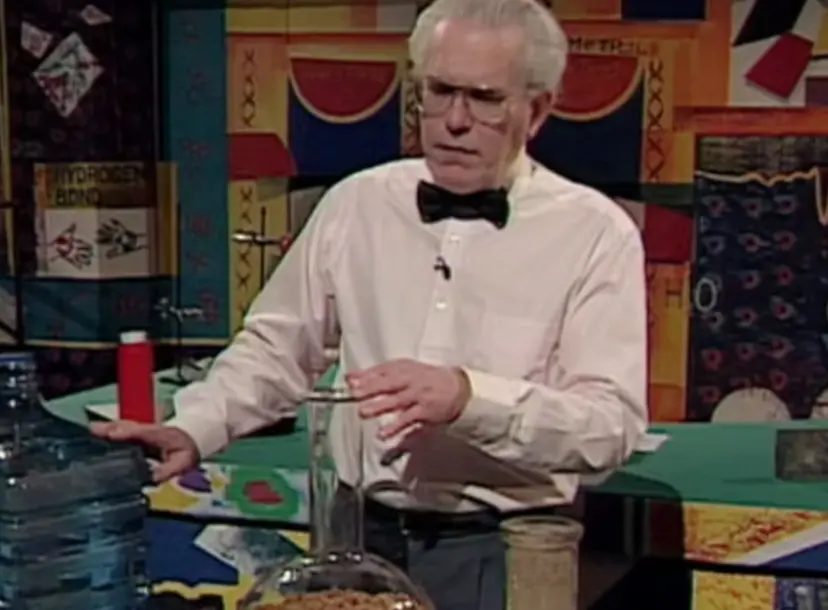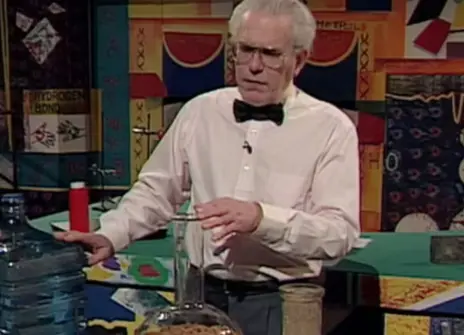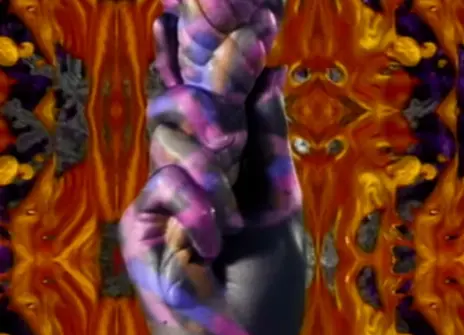Lecture 3 – The handed molecule
From the 1992 lecture brochure:
In this lecture we venture below the surface of objects at the human scale to reach the molecular level. We explore the assembly of molecules from atoms and show how minute they are on the scale of familiar objects.
Of the roughly ten million known molecules, with their immense diversity of possible molecular structures, we shall concentrate on molecules that contain the OH - hydroxyl - group, such as water, alcohol, anti-freeze and sugar. Spectroscopy will show us the OH group and other groups in these tiny collections of atoms and we shall see that this class of molecule is notorious for sticking together. We will look at the effects of such association on the behaviour and the properties of molecules.
Spectroscopy - the interaction of light with molecules - is a vital aspect of chemistry and we shall concentrate on a special interaction, that of plane polarised light with molecules of various kinds.
We take up the theme of molecular handedness by way of the observation of the rotation of plane polarised light by materials. We re-enact the deduction of molecular asymmetry by Pasteur in 1847, when he solved the mystery of the multiple tartaric acids. We look at the separation of right and left handed molecules - resolution - and we look at how handed molecules associate in special ways, particularly when they contain an OH group. We shall illustrate this association with very recent work on reactions at surfaces and in Lecture 5 see how such association produces the spiral (helical) molecules upon which life depends.
About the 1992 CHRISTMAS LECTURES
From the 1992 lecture brochure:
We are set apart from other animals both by the use of language whose control is normally located in the left side of the brain and by the fact that unlike most other animals, which have mixed handedness, we are predominantly right-handed. Recent speculations have focused on the possibility that these two attributes are interconnected genetically, a link that could lead to an understanding of the neurobiology of language and its molecular biological basis.
In these lectures, we shall look at first our own symmetry, overall in terms of handedness and our superficial appearance, and also below the surface at our brains and other organs. Then we shall look at ourselves in the world at large, focusing on the symmetry of our fellow creatures and the artefacts that we have created. The connection of both of these to left-right relationships will be explored.
The most significant handed (chiral) objects we encounter, usually unconsciously, are the molecules that we and all of our surroundings are made of. We will look at the nature of these molecules and trace the understanding of the significance of handedness at the molecular level in the 19th century, for which it was the most far-reaching chemical realisation.
Our contact with handed molecules has profound significance in terms of, for example, sensory perceptions such as taste and smell. We can distinguish between handed molecules and this tells us that our sensory apparatus is itself handed.
Our existence depends upon the handedness of molecules both large and small and without such molecules, we would not be able to digest our food, build our bodies, or transmit our characteristics to the next generation.
We return to the opening speculation. The genes - themselves composed of handed molecules - control the development of handedness and cerebral dominance, a link that has the potential to give us an understanding of the biology of language. We leave our consideration of chirality - handedness -with an unsolved mystery. Where do chiral molecules come from?





